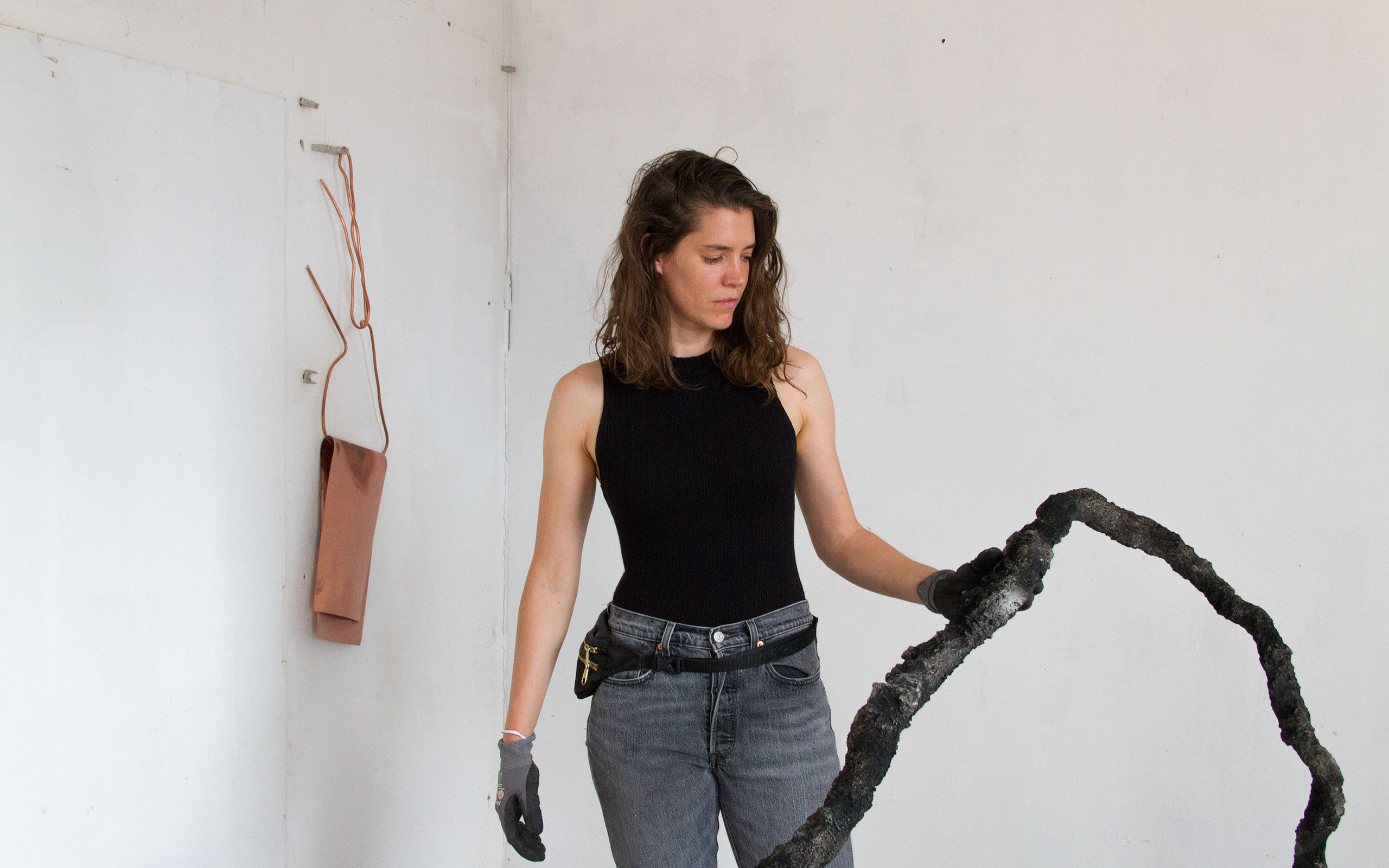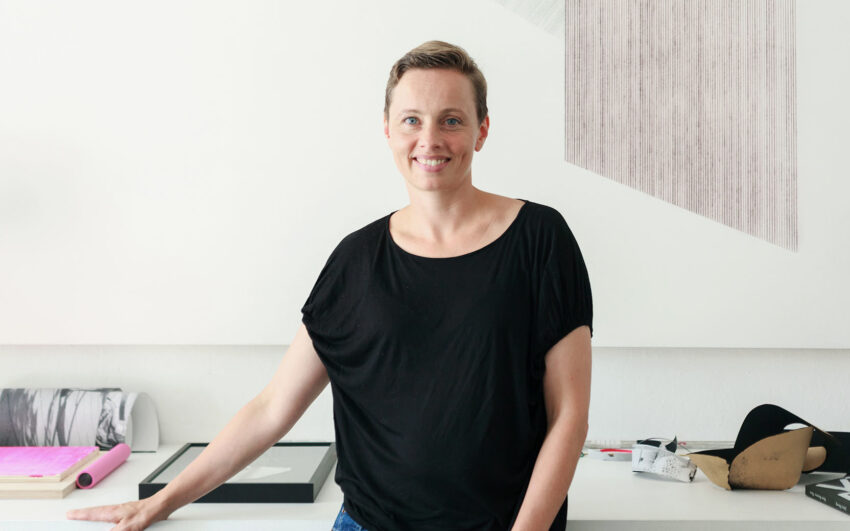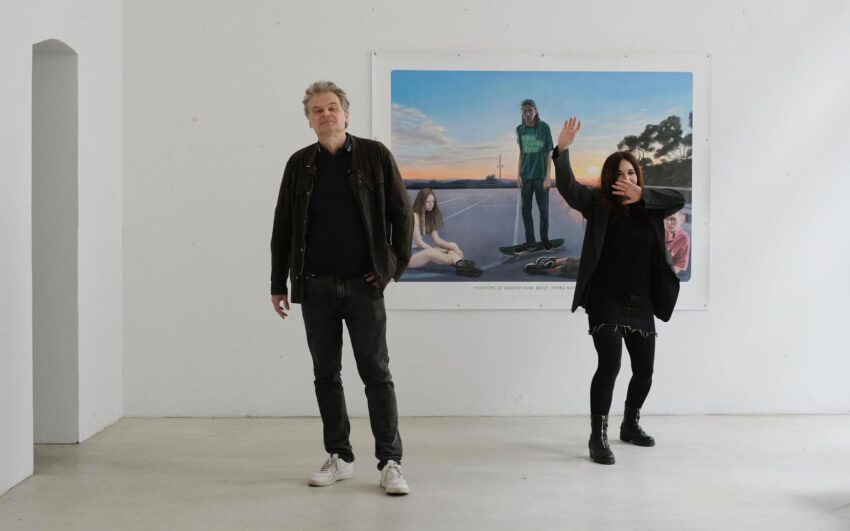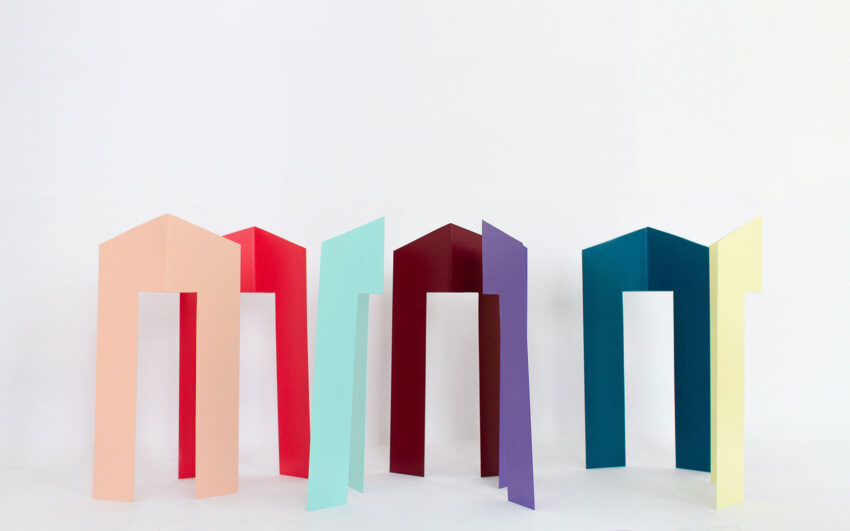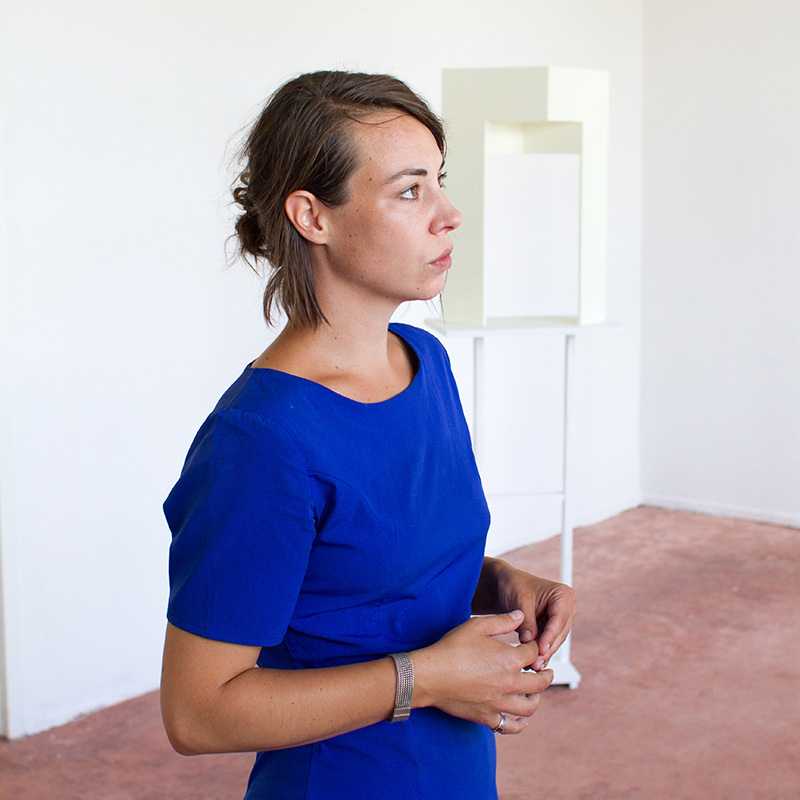Angelika Loderer’s sculptures could be described as “media-reflective art”, as it is the properties and manufacturing process of the chosen materials that determine their creation. Her fragile and temporary objects consist of cast metal and secondary or auxiliary products from the casting process, such as molding sand. By this, the artist reflects on the tension between the durability of the one and the ephemeral quality of the other material.
Angelika, what artistic approach are you presently pursuing in your artistic work?
I have always tried to expand the term sculpture, and in doing so questioned the meaning of classical sculpture and the representation of the nude figure in sculpture. So I began concentrating on its formal foundations and experimenting with various techniques and materials deriving from classical sculpture.
You like to work with forms that you have found somewhere. Sometimes we don’t recognize them, but they already exist.
Right! I have begun to work with existing forms. We are surrounded by so many objects from which one can choose instead of creating new ones. In this context I am asking the question: is an idea or form good enough to have the right to be realized?
A classical sculptor is expected to create objects from raw materials. In your case the object already exists. How did the idea emerge?
It actually began with a lack of money because materials are expensive. I therefore tried to bypass the negative form – out of necessity really. This is how the series Schüttlöcher originated for which I poured the casting material into the negative space, the holes of abandoned animal dwellings like dens of moles or hollows of woodpeckers. This requires the development of sensitivity towards the environment, materials, and technique. I’ve always been interested in processes and experiments moving towards the term “media-reflective sculpture” with this principle.
What does the term “media-reflective” mean in regard to your own work?
Media-reflective means to me that the material properties and the manufacturing process of my materials can flow back in the creative process as basic parameters of my work. I use materials like sand, wax, metal, plaster, and the likes testing their potential. Last year for example, I have worked with a mixture of fungi mycelia and wood shavings. I tried to feed the fungi various things. It was exciting because fungi are a living material and there are so many species. I began to work with fungi excited about the idea that a fungi mixture begins to paint when placed with photographs in a plexiglass box. As in an aquarium one can watch the process and see how new pictures develop by means of infestation and decomposition until the fungus dries up turning into a papier-mâché-like material.
What is the basic idea behind this work process?
I think I am searching for a subtle depiction of something that is normally invisible or considered unimportant yet has a tremendous influence on our existence and surrounds us constantly.
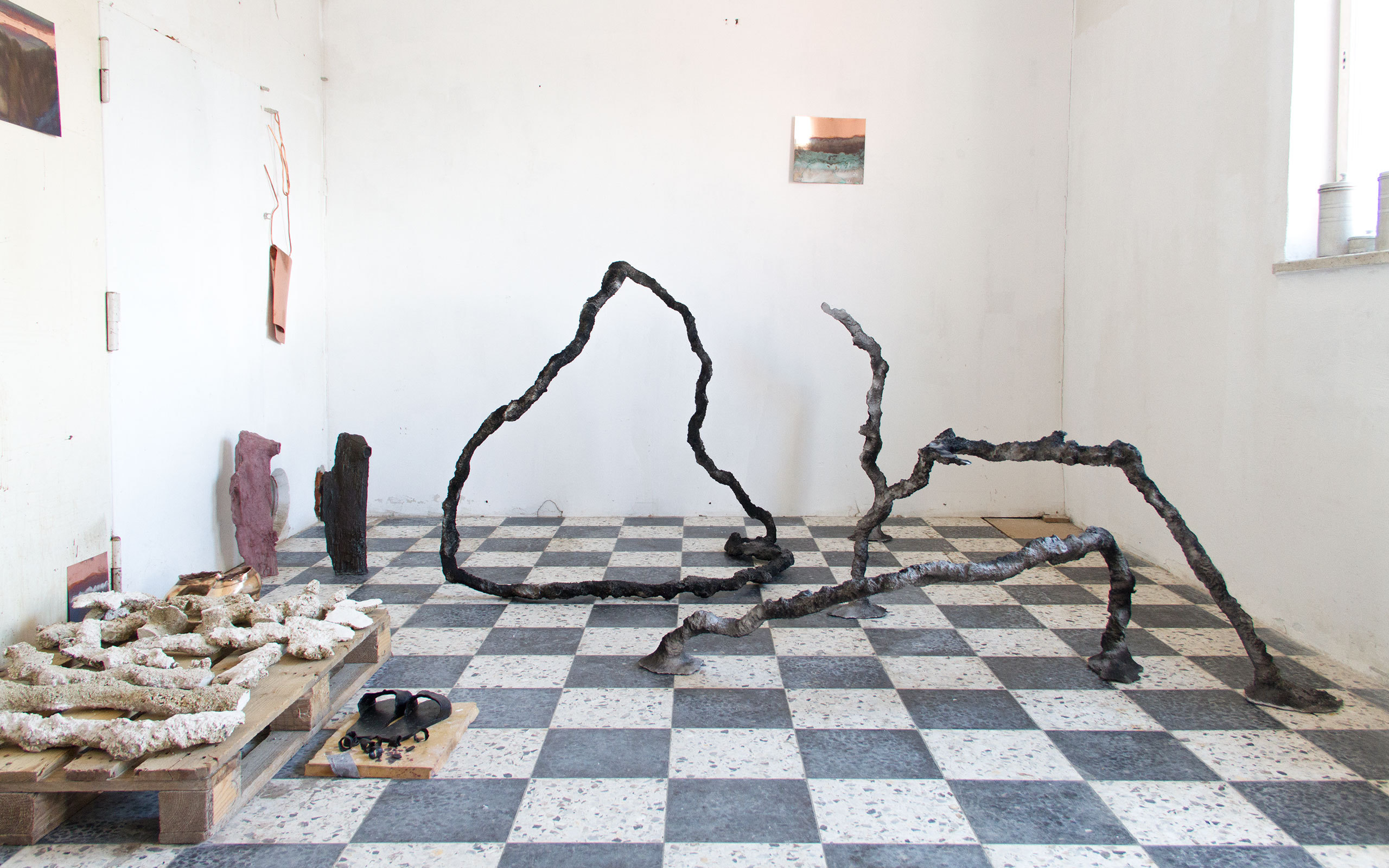
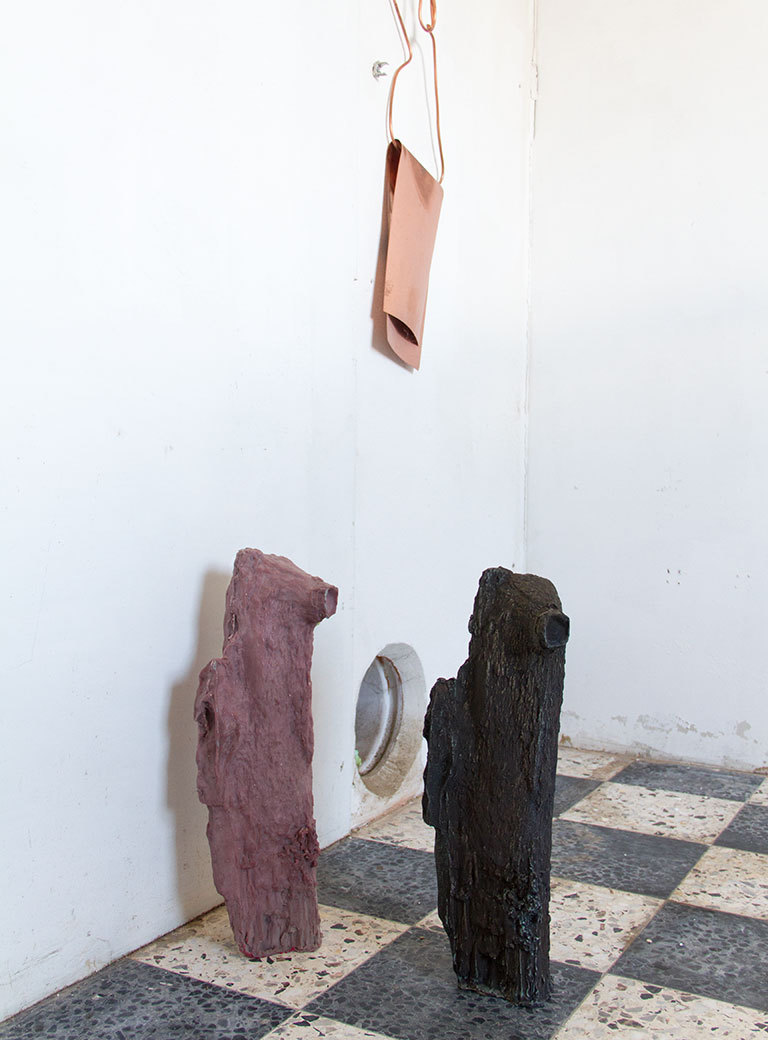
You studied with Erwin Wurm who with his “One Minute Sculptures” changed the term sculpture. How did you experience studying in his class and which experiences flow into your work today?
Since I come from a rural area I didn’t know much about contemporary art. The only things I knew was that I was very curious. At the time, the study course at the University of Applied Arts Vienna was called “Sculpture and Multimedia”. Erwin put no limitations on the term sculpture. I found the approach exciting and I was able to let my fantasies run free. Erwin nurtured my motivation right from the beginning. I am still grateful to him for his trust in me.
Before your art studies you had dedicated yourself to the science of sport.
That’s right. As a first step to move out of my village Feldbach, I studied sport science in Graz after graduating from high school. A study year in Arkansas, in the United States, at a Liberal Arts College gave me the opportunity to work artistically. Later then I studied in Erwin Wurm’s sculpture class at the University of Applied Arts Vienna.
At first glance, art and sport appear to be very different fields.
I think there are some parallels between the two fields. In sports there are very clear rules and point systems. The same exists in the arts, although the arts are allegedly free, one has to dedicate oneself completely and almost naively without knowing whether one will be successful, also one has to bring a whole lot of endurance to it. Furthermore, clubs and societies in sports are not so far from groupings in the art world.
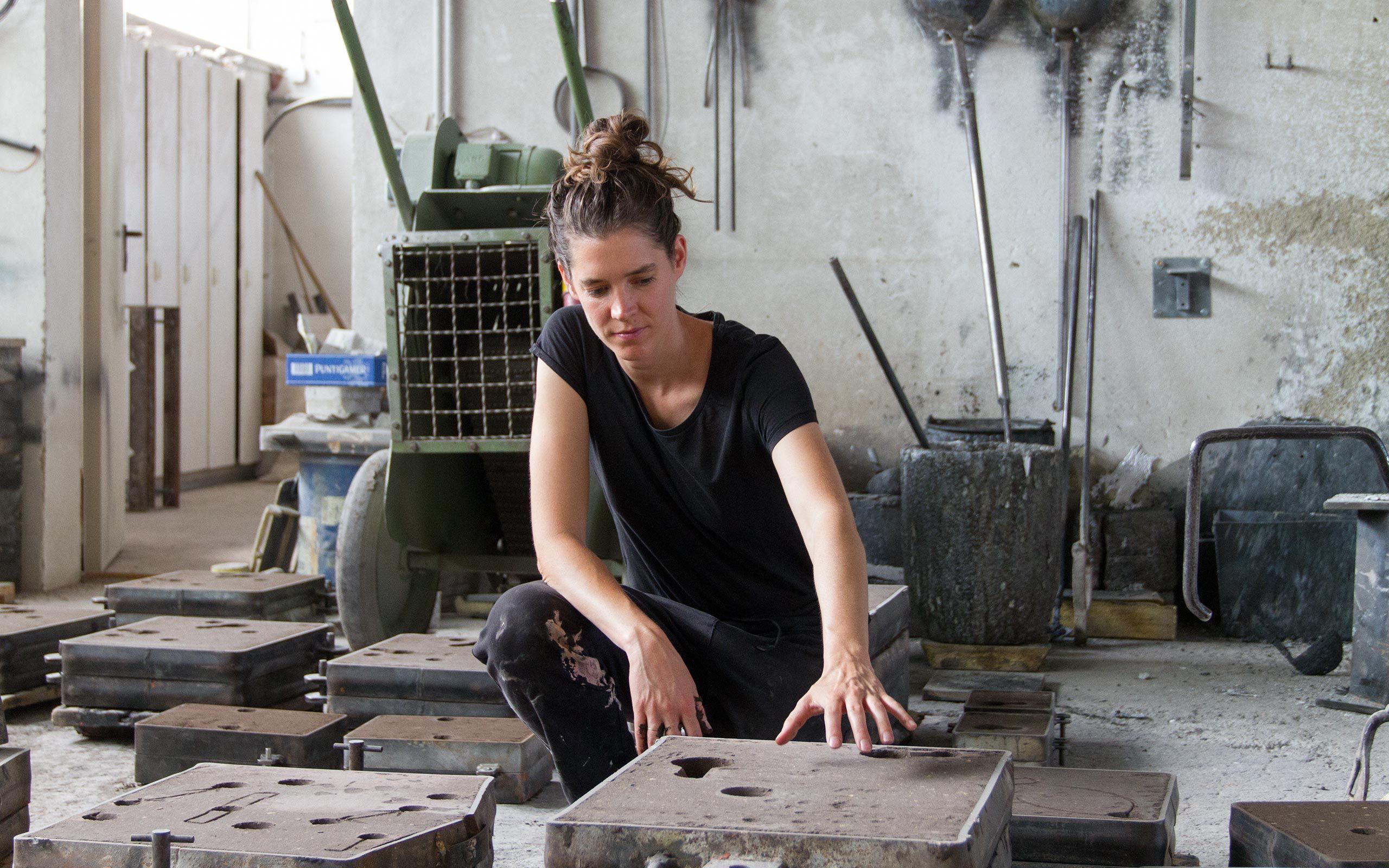
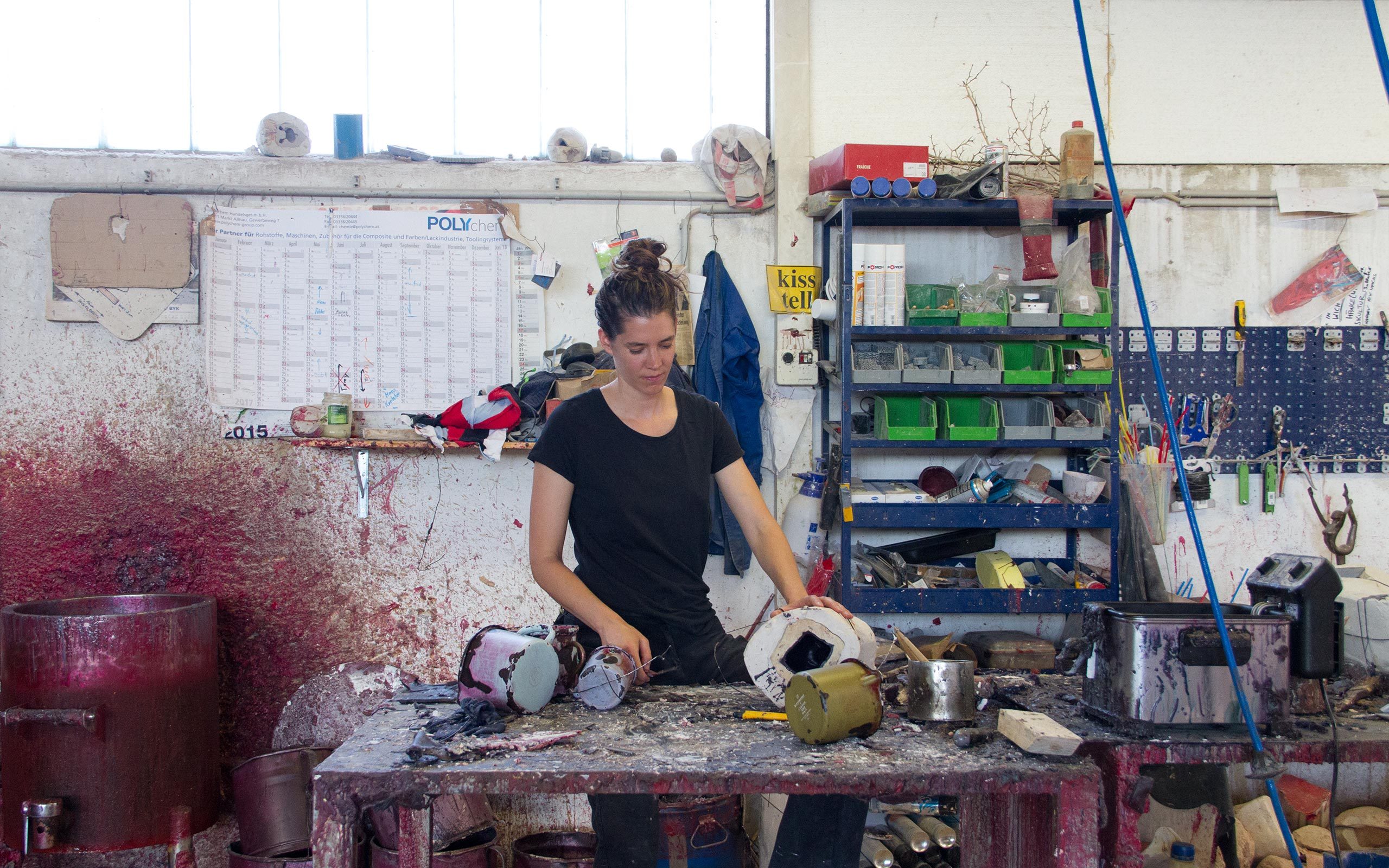
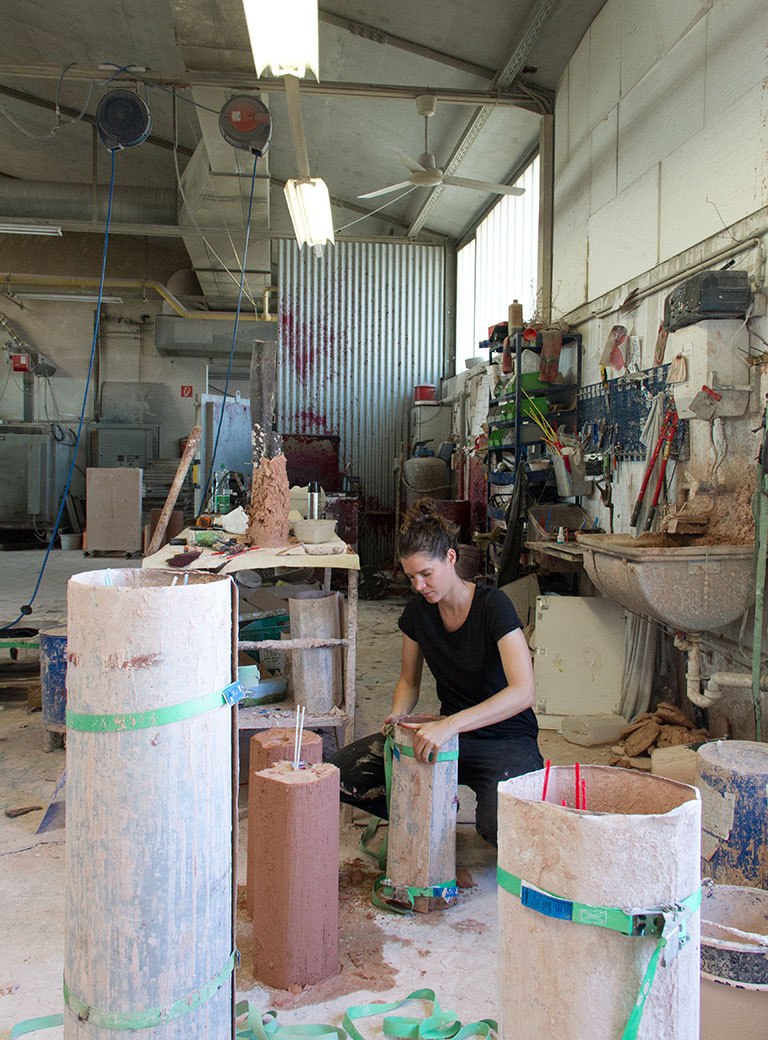
This spring you were invited to exhibit in the Graphic Cabinet of the Secession. It was not your first solo exhibition but surely an important moment in your young career.
Yes, it was really an exciting experience. I showed an installation of sand works. On the walls I presented some fungus mycelia pictures and a collection of eggs was displayed in a vitrine. I wanted to integrate materiality, balance, and gesture into the space in a natural, casual, and playful way. At the same time, it was important to me to explore the boundaries of the sculptural form in a self-assured and informal manner. Not only did I want to convey the absence and the presence of space and the stability and transience of objects but also to visualize living processes like disintegration and the entanglements in between.
How did your impressive sculptures from casting sand that could also be seen at the Vienna Secession materialize?
Casting sand is used in the process of making bronze castings. I use this medium in order to create the work, a sculpture, from it. The sculptures emerge according to a plan from the negative space and are built each time in situ. These are the limitations of both the material and of myself, because pressing sand into form and size takes a huge physical effort. I find the aspects of fragility and impermanence of these works interesting, also the fact that the material is reusable.
Your sand sculptures are always a combination of the same three colors. Why is that so?
I use sand as it comes from metal casting production. I don’t think it is really necessary to color it because the colors conjure up the process. My sculptures are kept in the natural colors – brown, orange, and black. Brown silica sand is the basic material used in foundries. Soft oil sand has an orange color and is used to achieve fine surfaces in the casting process. Black sand has already been used for a casting and became burnt in the process.
Are the fragility of works like your sand sculptures or the fungi- infused photographs an impediment for people who want to collect your work?
Not really! Recently I sold a piece with fungus mycelium to a medical doctor. I suppose that because of her profession she appreciates the living and unpredictable quality of the work. Recently a collector ordered a sand sculpture and I wanted to involve him in the construction of the sculpture. The price included that I install the work twice for him in case the work collapses or if he wants to take it to another location. I always provide building instructions so that the collector can apply hands him or herself. I think particularly this singularity appeals to many people who collect art.
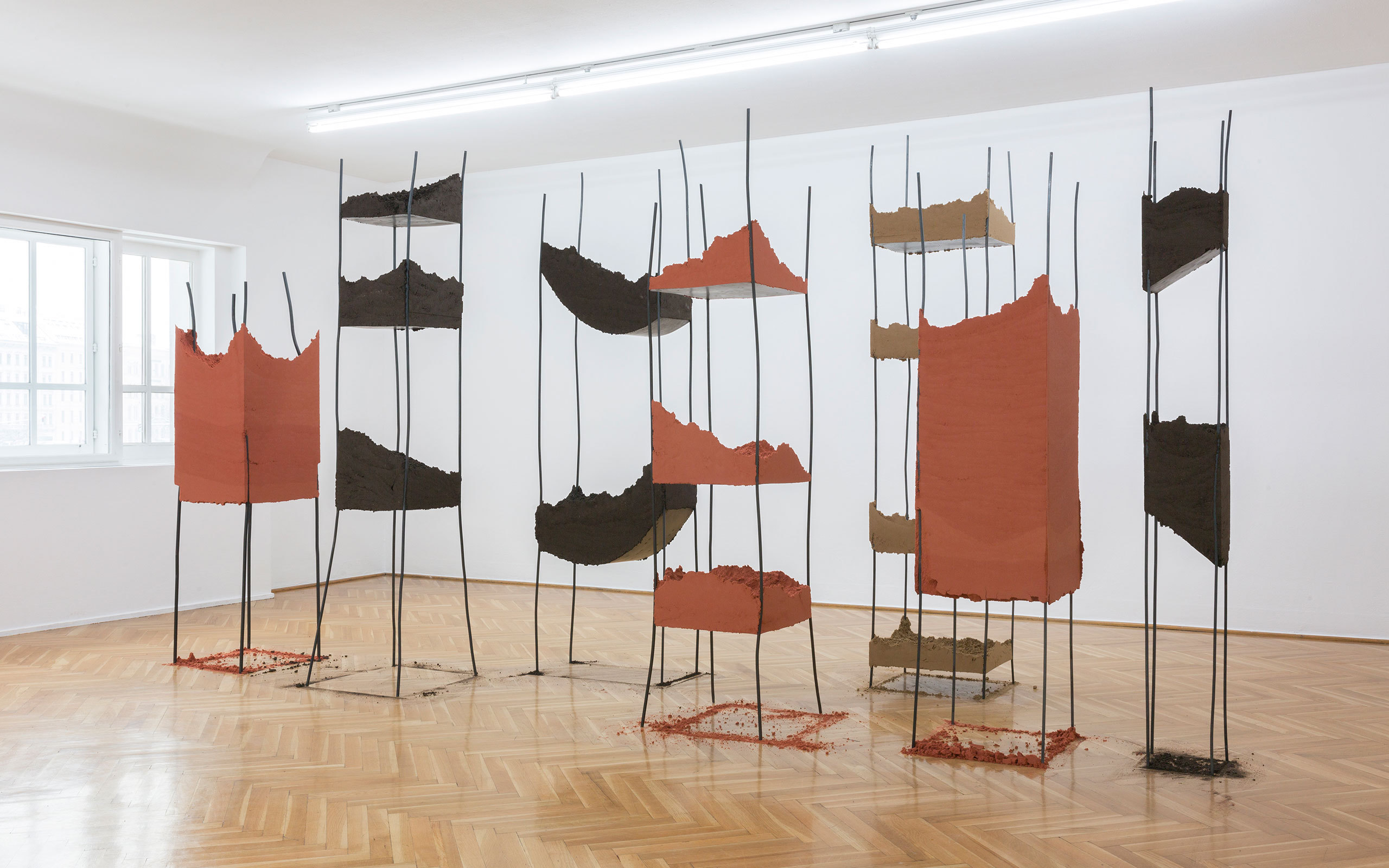
Untitled (Secession), 2017, Courtesy Angelika Loderer
Photo: (c) Matthias Bildstein
You work in both places Vienna and your home village Feldbach in Styria. How do you divide your time between the two locations?
It depends on the work phase and which work I am working on. This summer, I decided to spend my time entirely in Styria in order to build a storage facility for my work. In the winter I’ll be in Vienna. Each environment adds different influences and possibilities.
Has the fact that the foundry has been in the possession of your family for four generations also determined which expression your art has taken?
My family’s profession has certainly influenced me, because I grew up in a workshop with men and with the most diverse languages of form. Art foundry as a craft business has become a rare business in Austria. It is an important place for me. However, I have not been able to appreciate it appropriately as a place for art creation, because simply everything is cast in our foundry: Well-known Austrian artists have brought their work to us; but we also have orders for industrial tools and everyday objects, religious items, and gifts. I was not able to acquire art critical background knowledge in our foundry, that developed in Vienna.
Have you actually acquired the knowledge of the work procedures of the art casting process by yourself?
Because the foundry was right next to our house, I spent time there as a child and played with the sculptures. As the business and I grew, I often worked in the foundry during summer vacations, in order to earn money. In the process, I learned a lot about casting.
There is an interesting photograph that shows your boyfriend Dejan with huge wax hands that look like paws. We haven’t talked about this material yet.
Sometimes I work with wax that I apply in layers in order to create volume. Dejan and I repeatedly dip extremities like hands and feet in wax until a form builds up following the principle of randomness. In this process that takes several hours, there emerge interesting, drop-like, pointed shapes resembling the heel of a shoe. Some works stay in wax, others are further processed. This is how my bronze shoe sculptures came into existence.
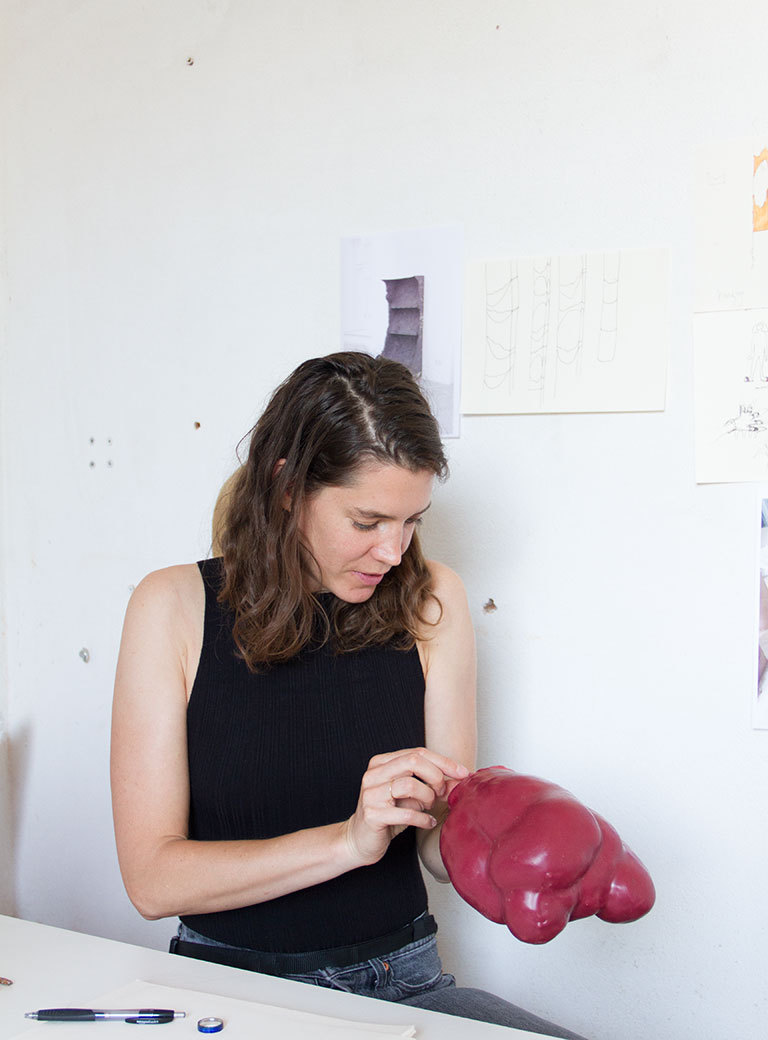
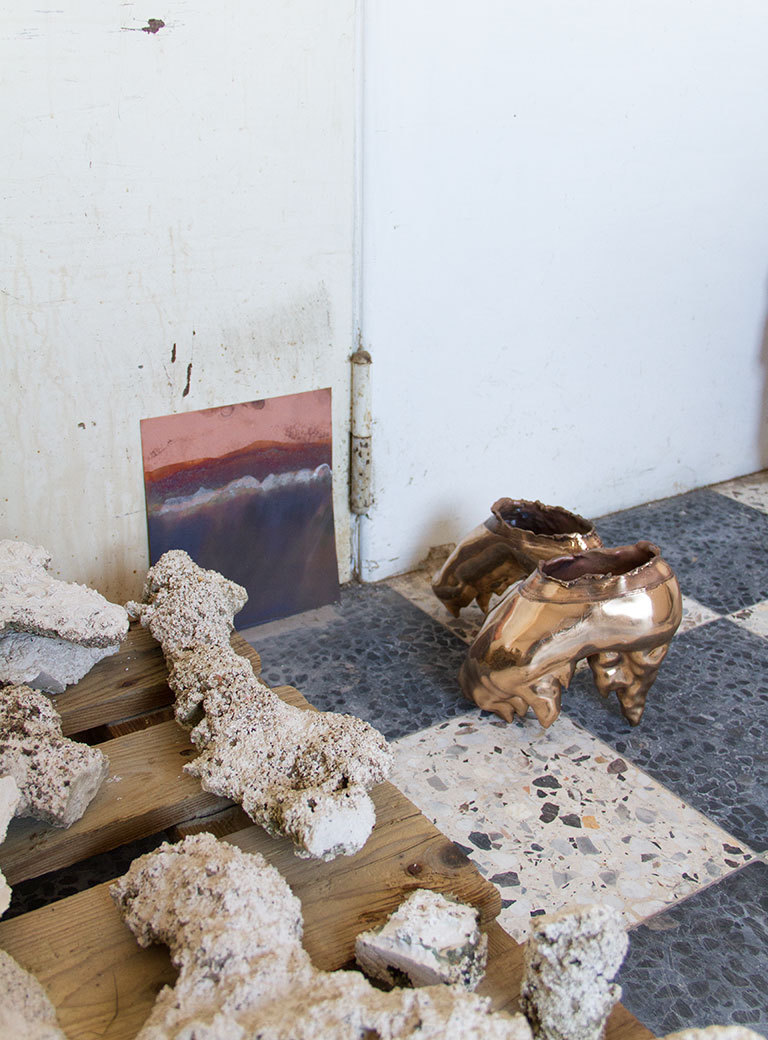
Is it true that the Icelandic singer Björk wore a pair of these extraordinary bronze shoes?
Yes, about four years ago, a British stylist wrote to me and ordered one of my shoe sculptures which at the time were on exhibit at Galerie Sophie Tappeiner and had been shown earlier with Erwin Wurm in Maissau. Björk was supposed to wear the shoes for a photo shoot with Nick Knight for AnOther Magazine. She tried the shoes but couldn’t wear them because they were simply not made for it. The bronze shoes were however part of the photo story.
So new materials and ideas for forms are always cropping up. With which new materials do you like to work most at the moment?
At the moment, I like to work with thermo-active materials. I am interested in the so-called “mood rings” of the 1990s which change color according to temperature changes and thus supposedly can reveal sensitivities. There are also lacquers that follow this principle. I would like to produce objects that play with the body, with closeness and sensitivity. Currently I am in the testing phase.
Are you presently planning any exhibitions?
I am presently preparing a solo exhibition at Galerie Sophie Tappeiner in Vienna that will open at the end of October. I look forward to it. A bigger show is planned for the winter in Milan.
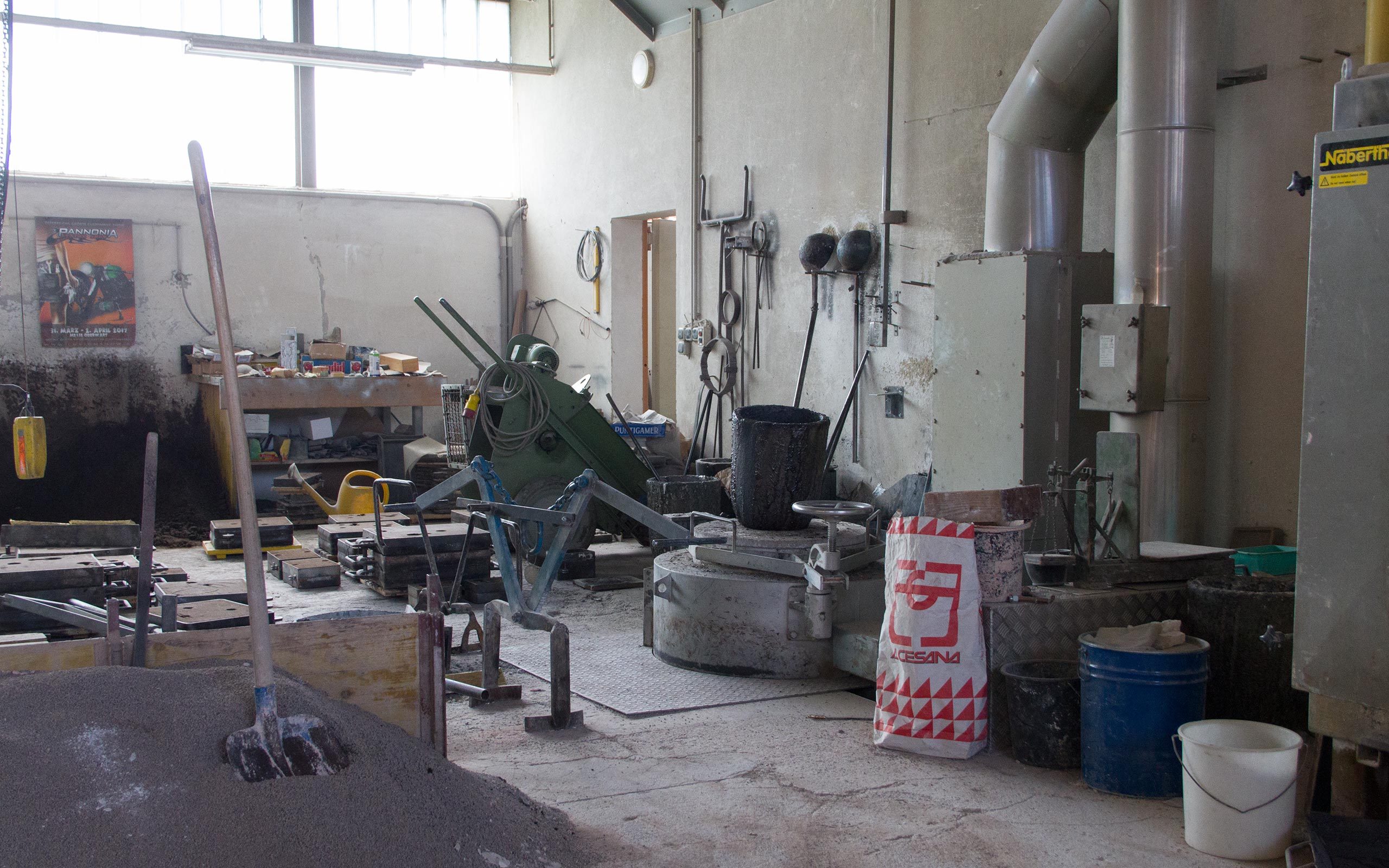
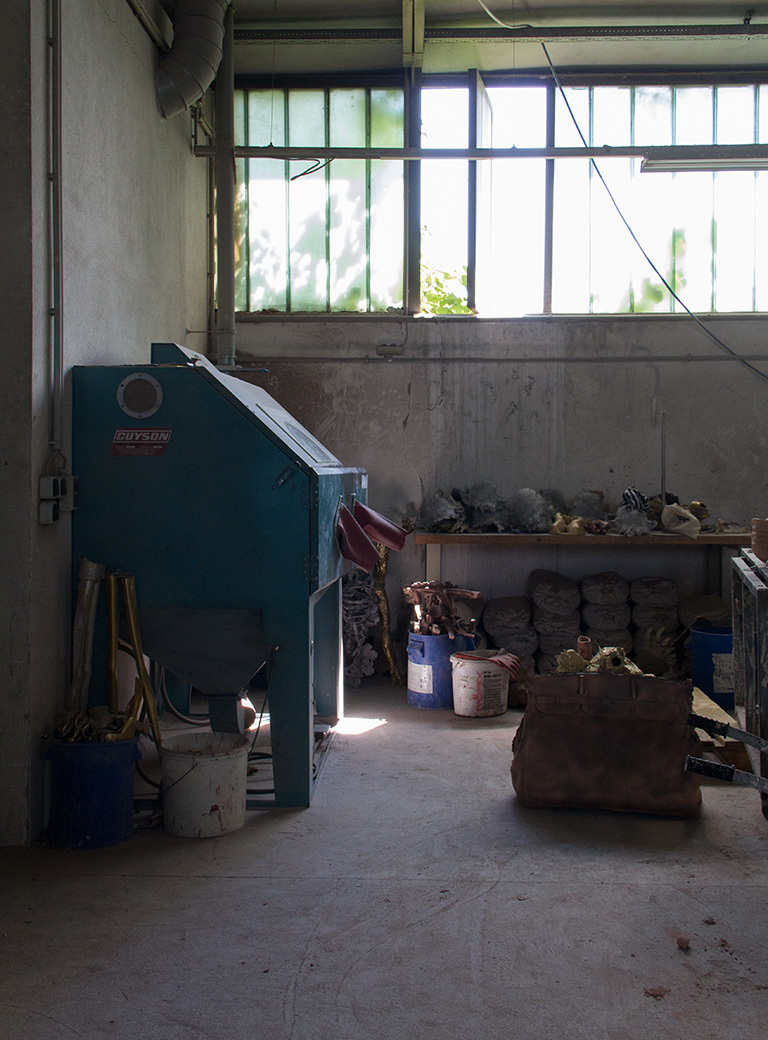
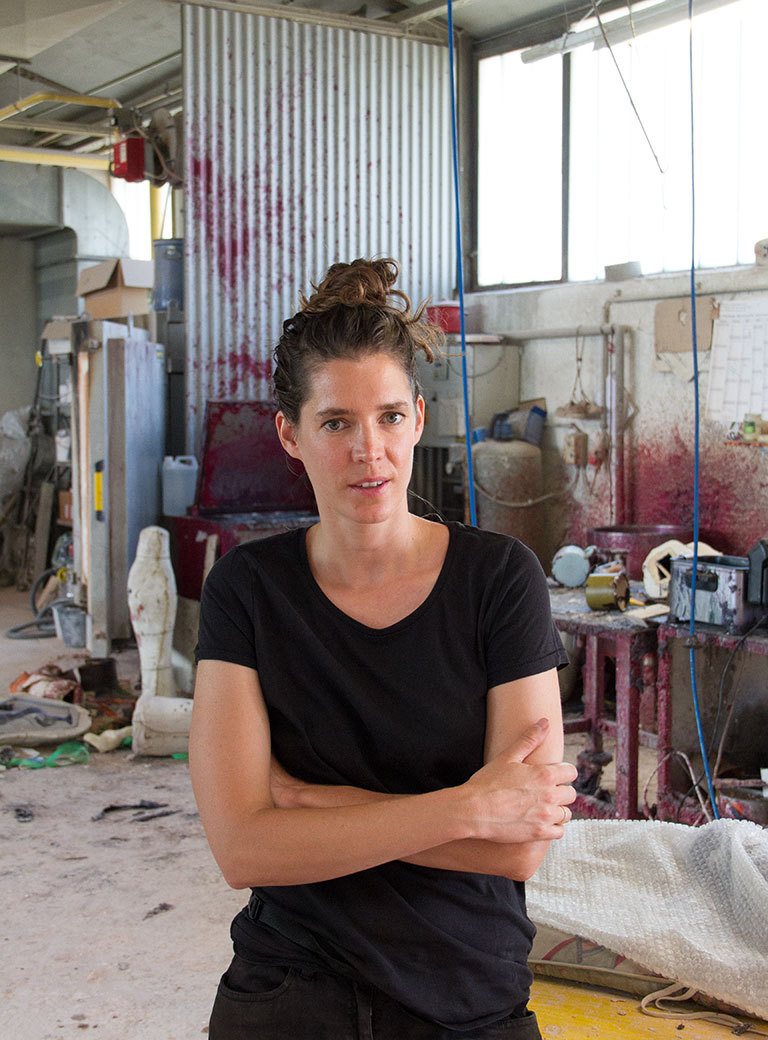
Interview: Alexandra-Maria Toth
Photos: Florian Langhammer
Links:
Angelika Loderer website
Galerie Clemens Gunzer, Zurich/Kitzkühel
Sophie Tappeiner, Vienna


